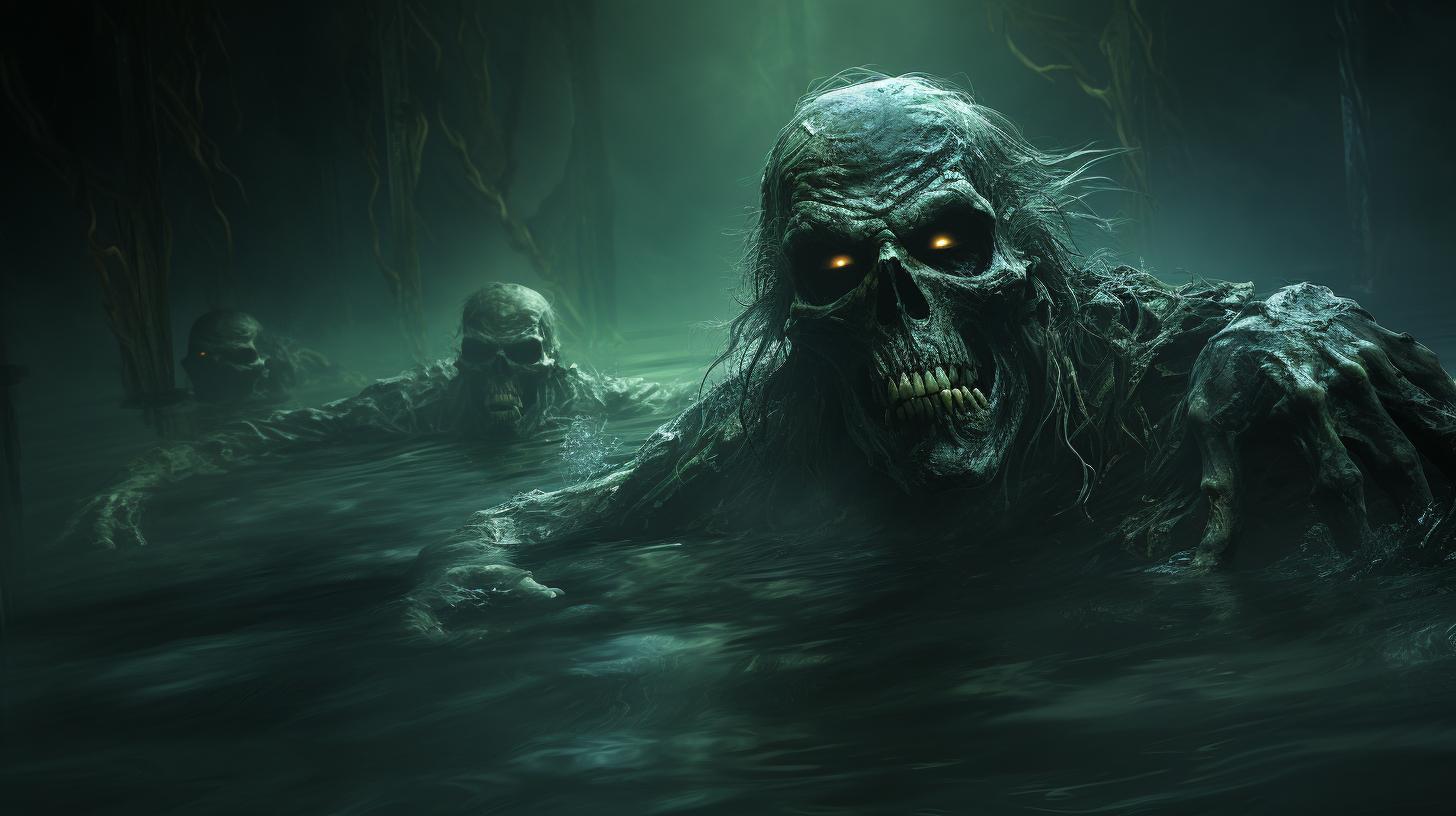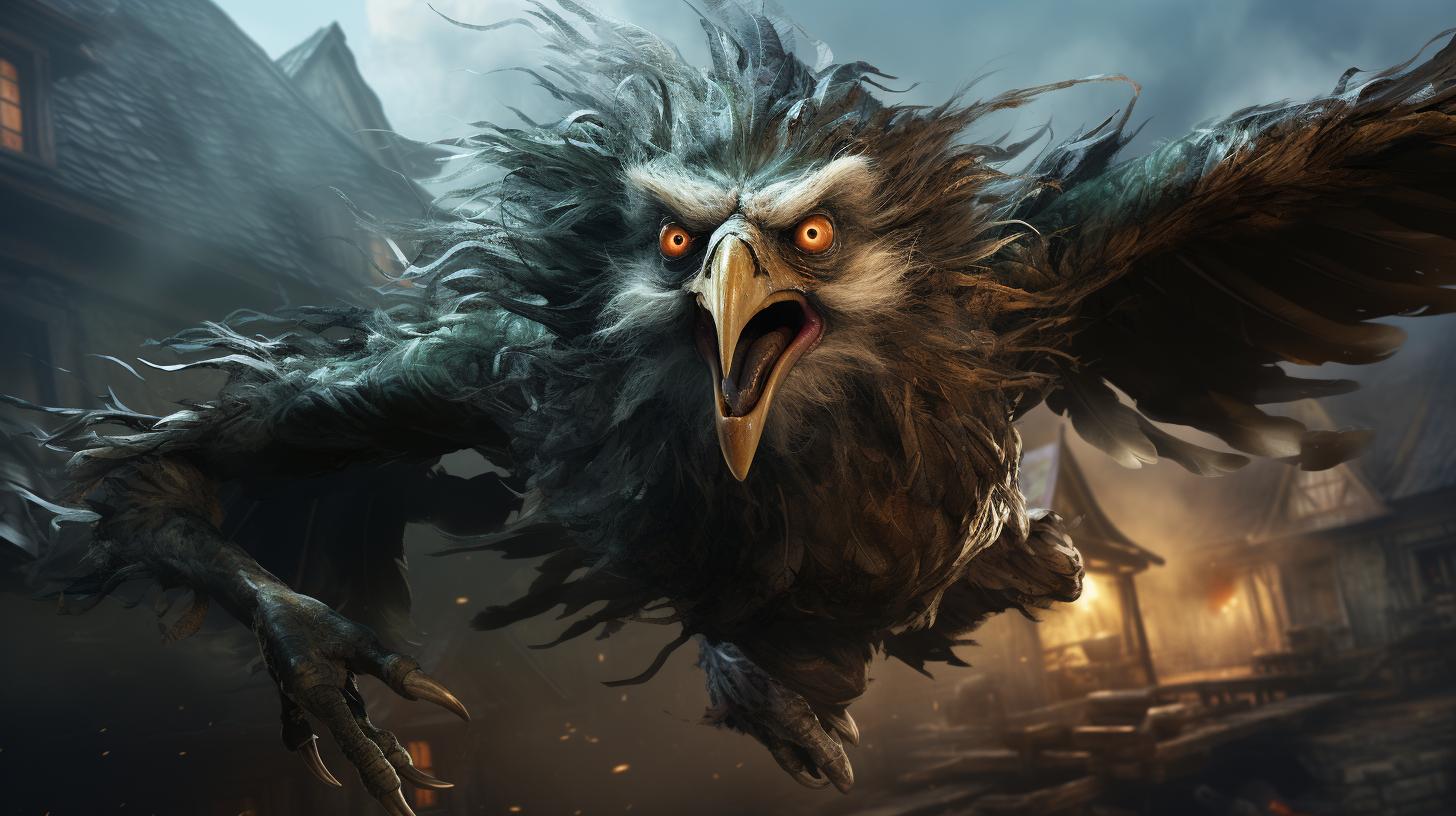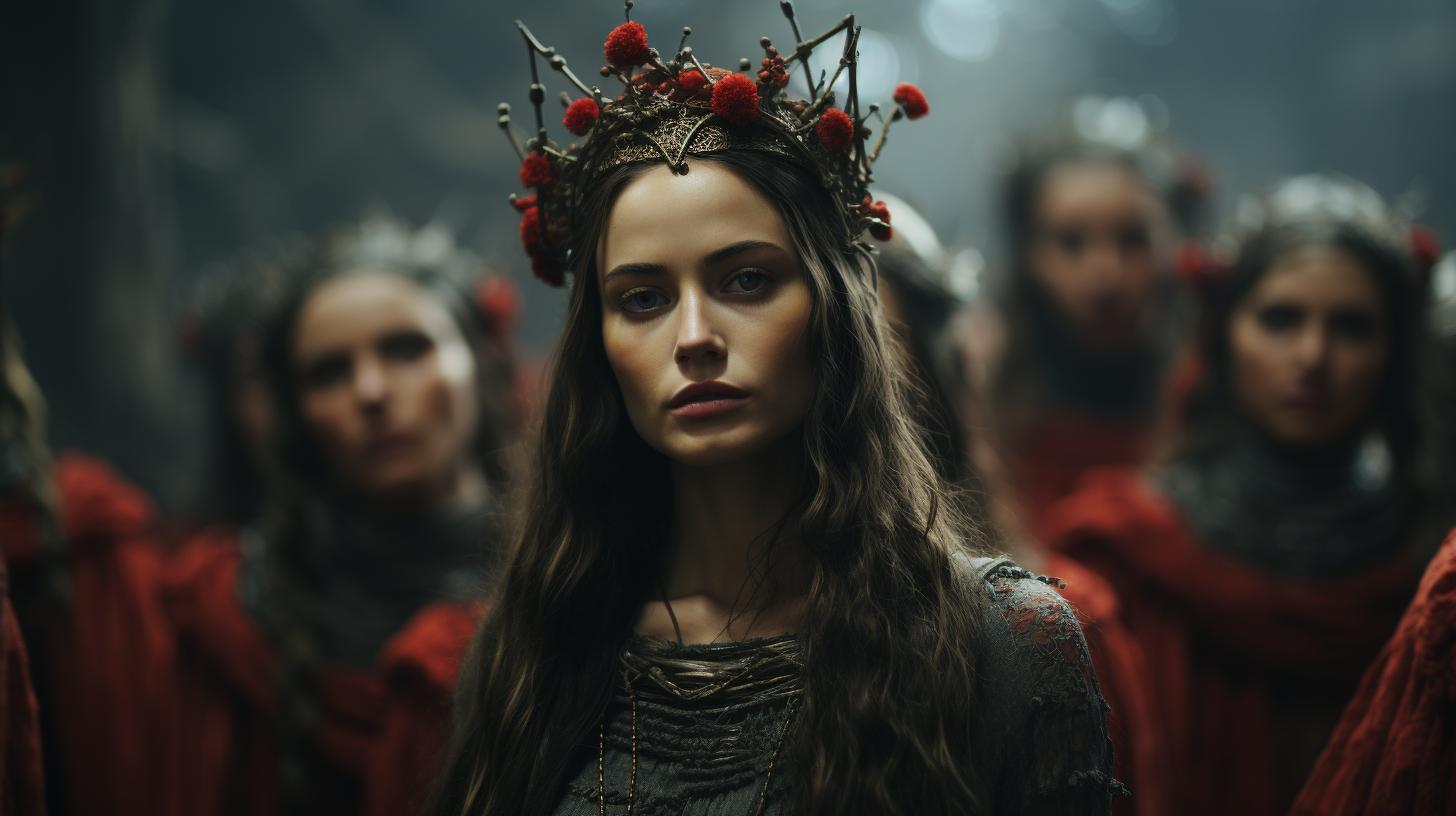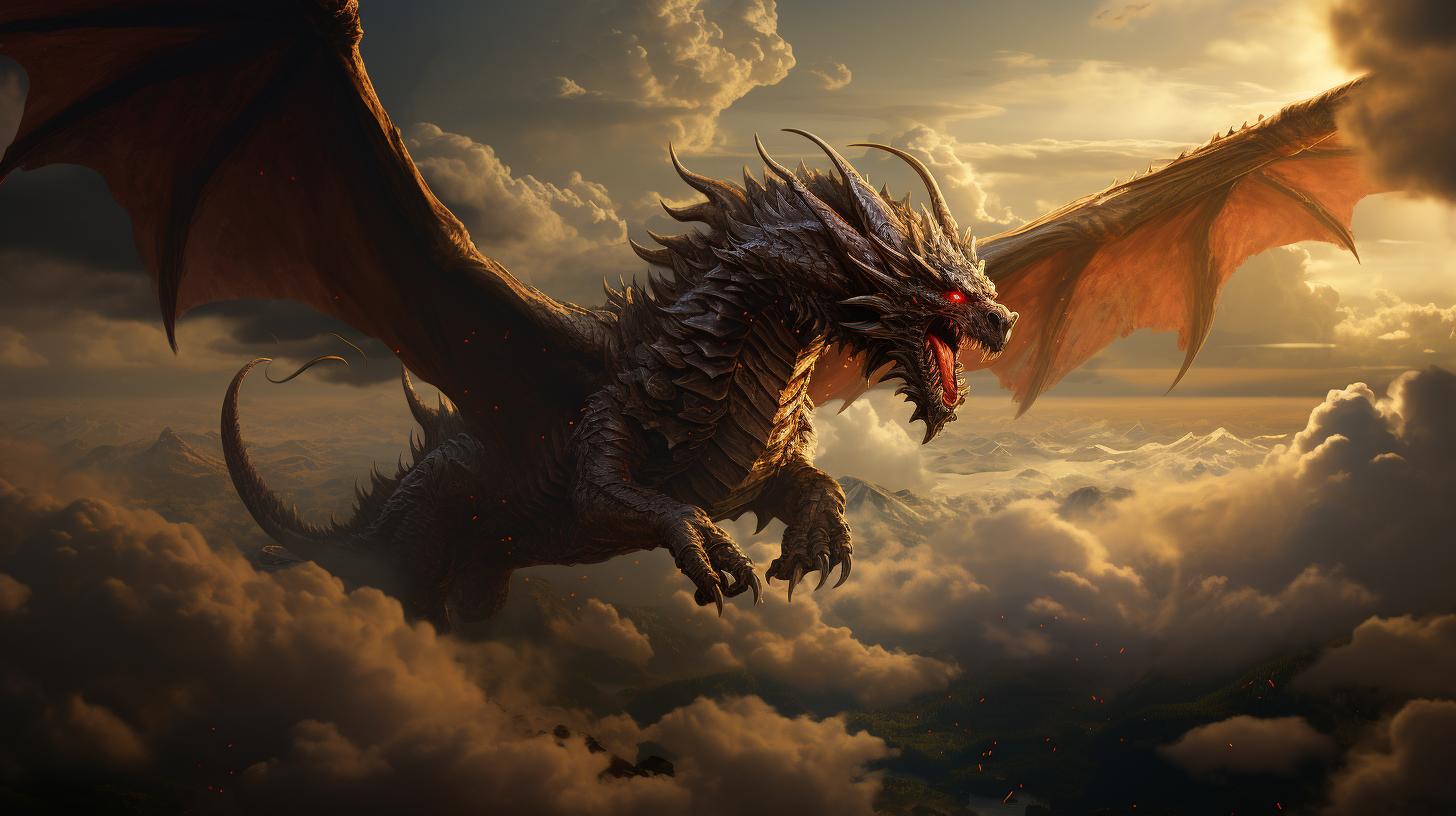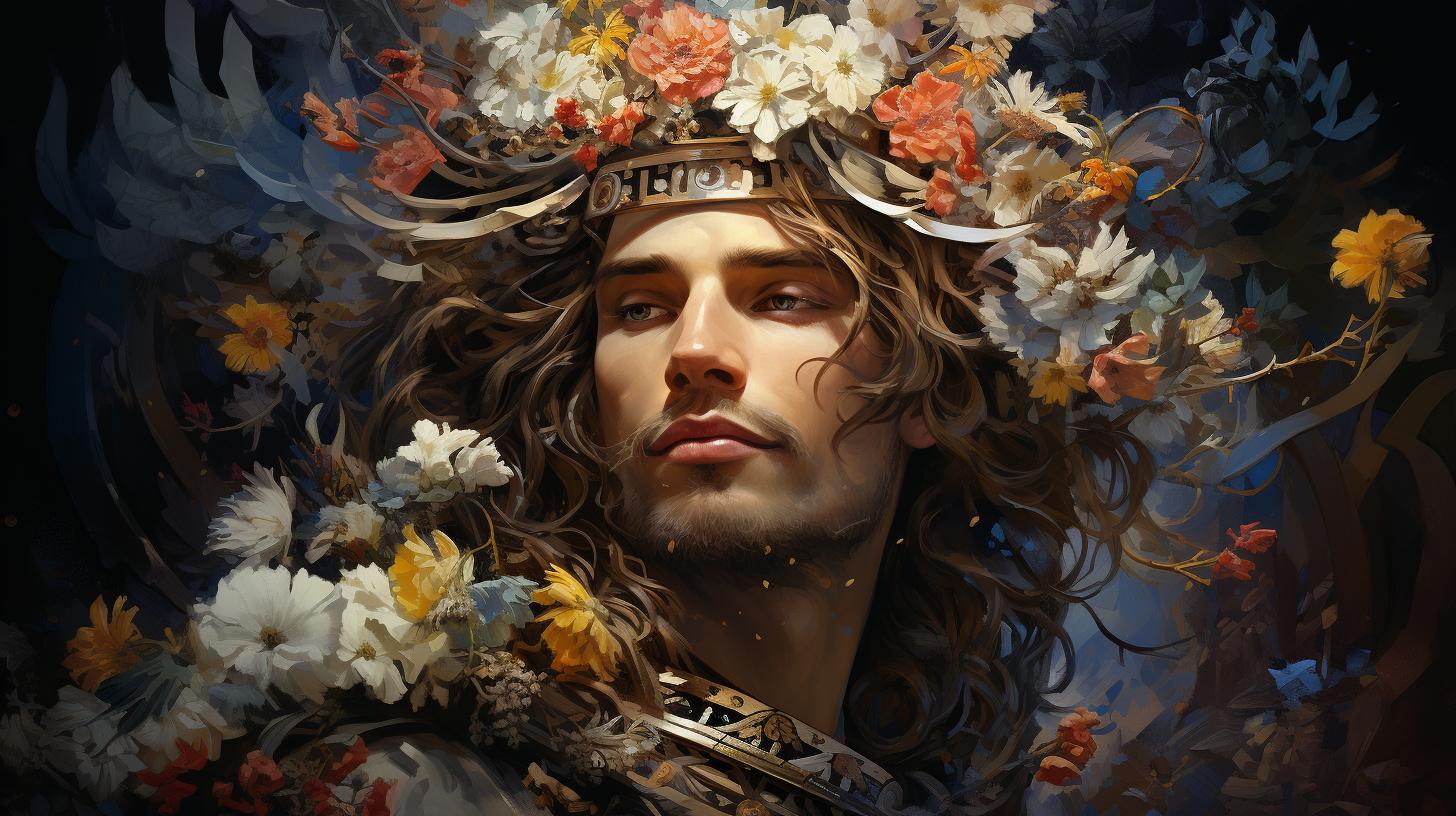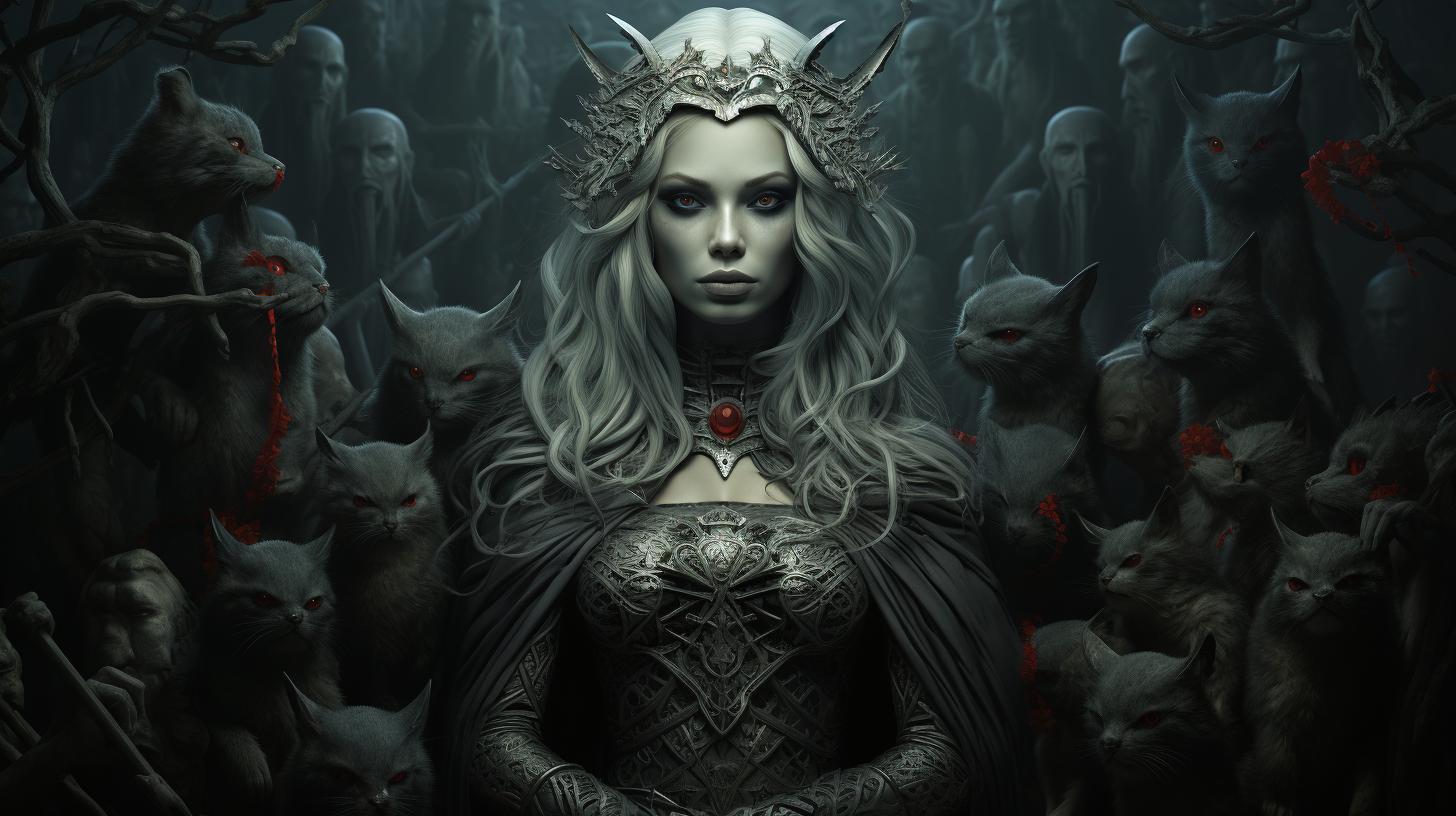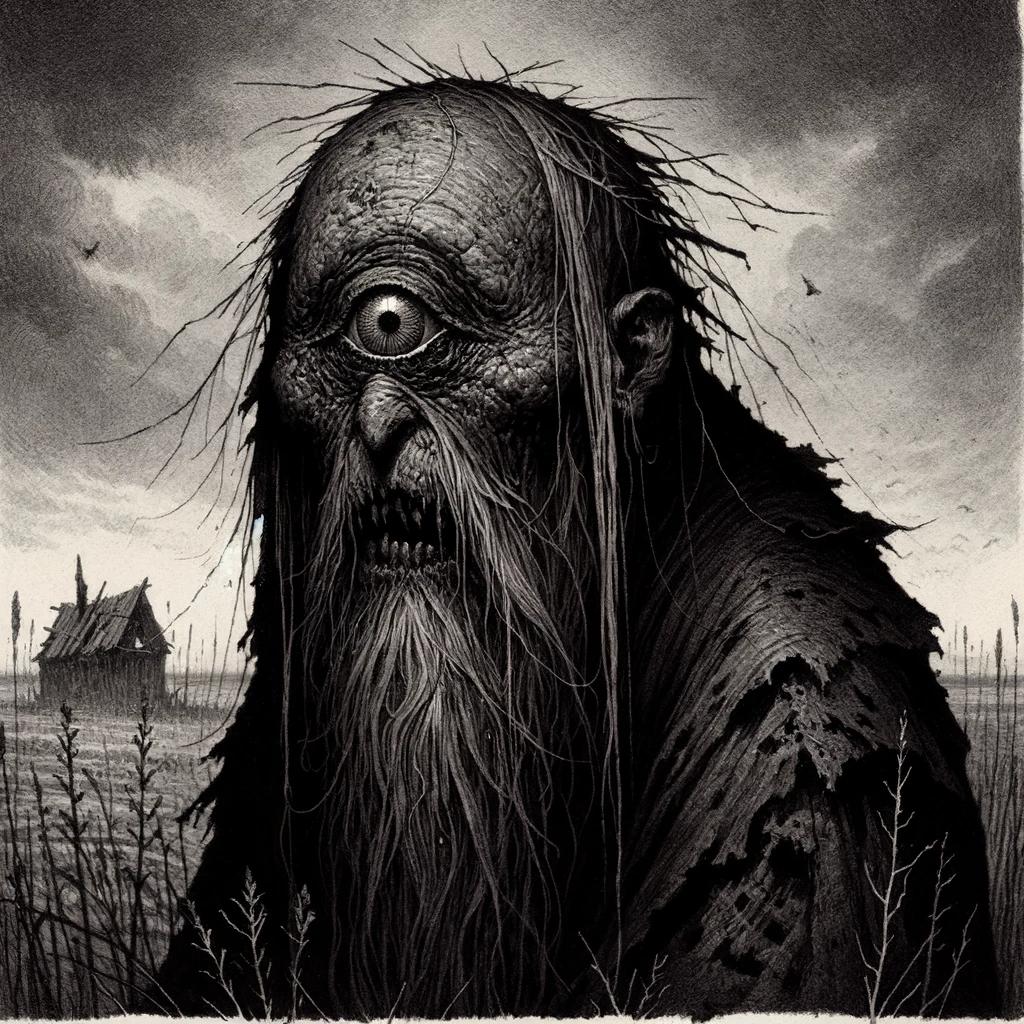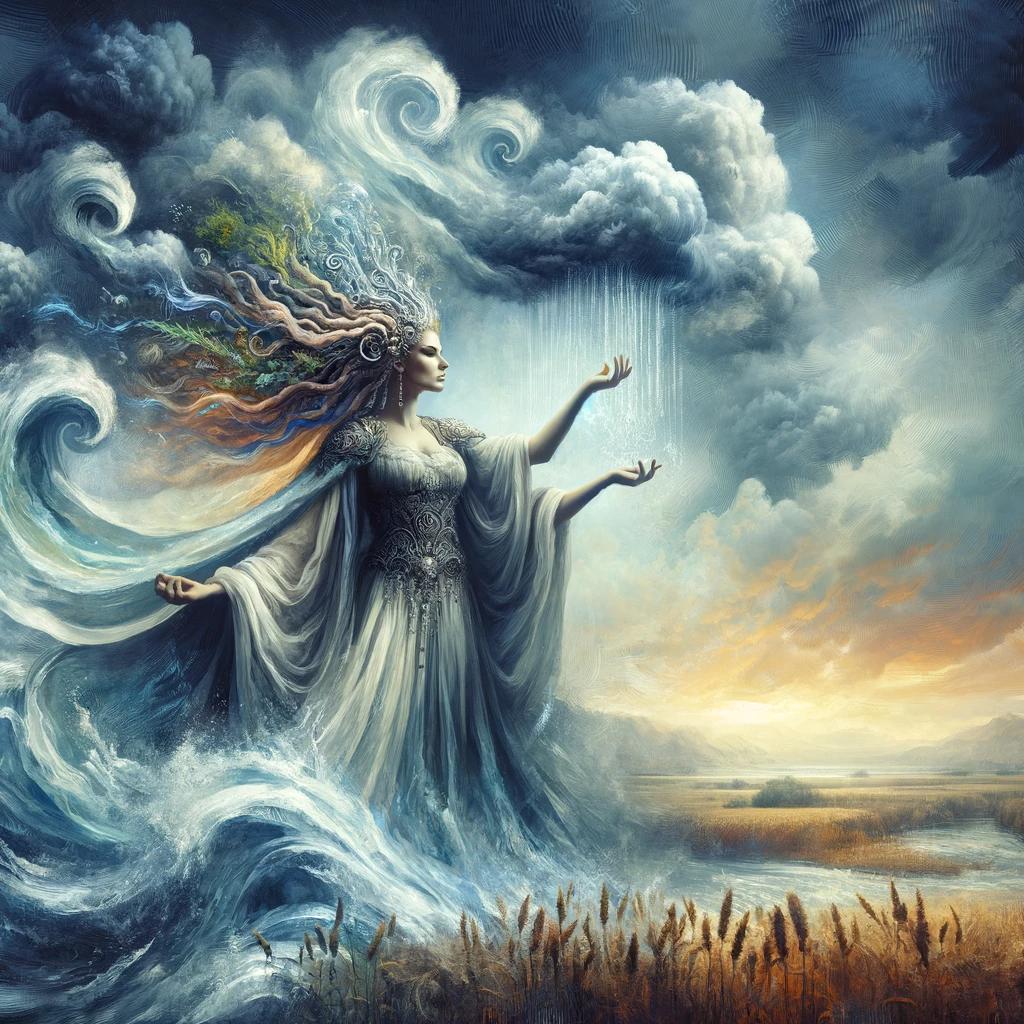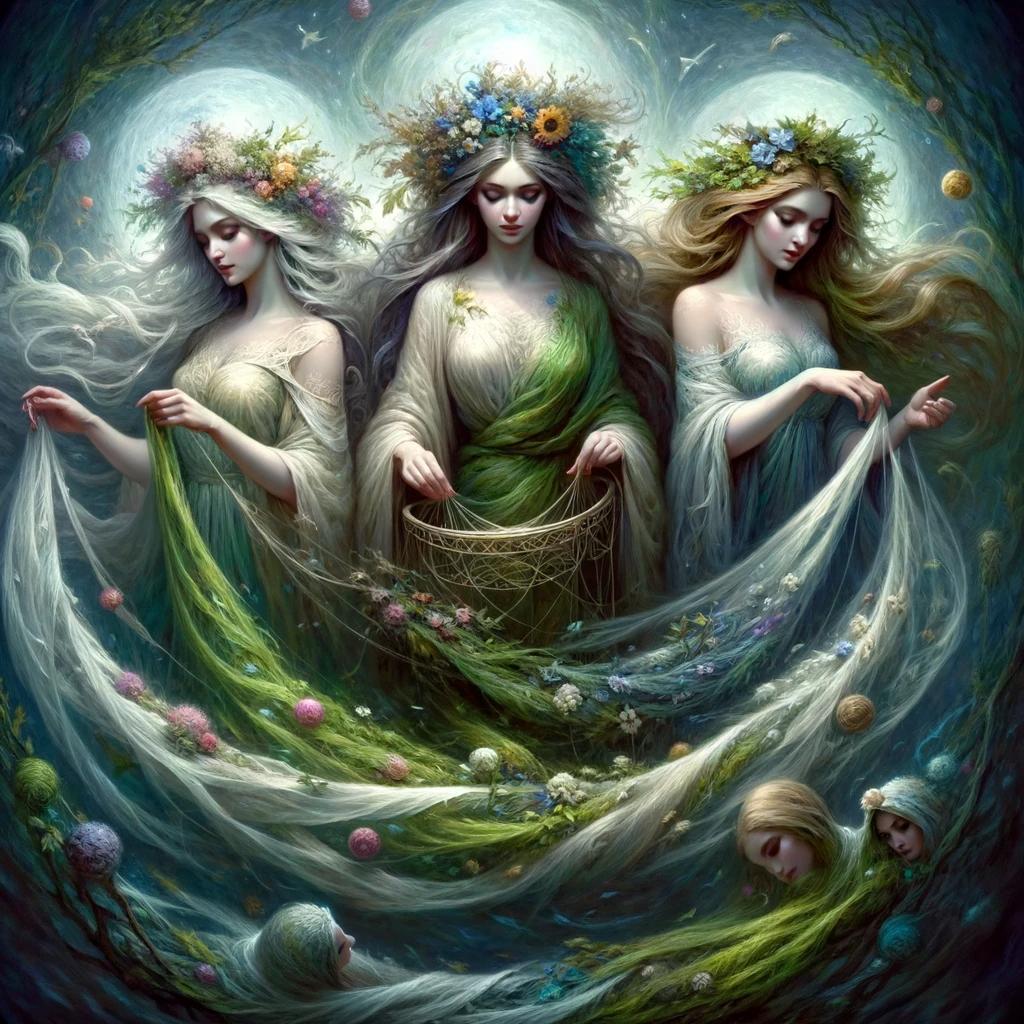Topielec: The Terrifying Swamp Demon from Slavic Mythology and The Witcher Game
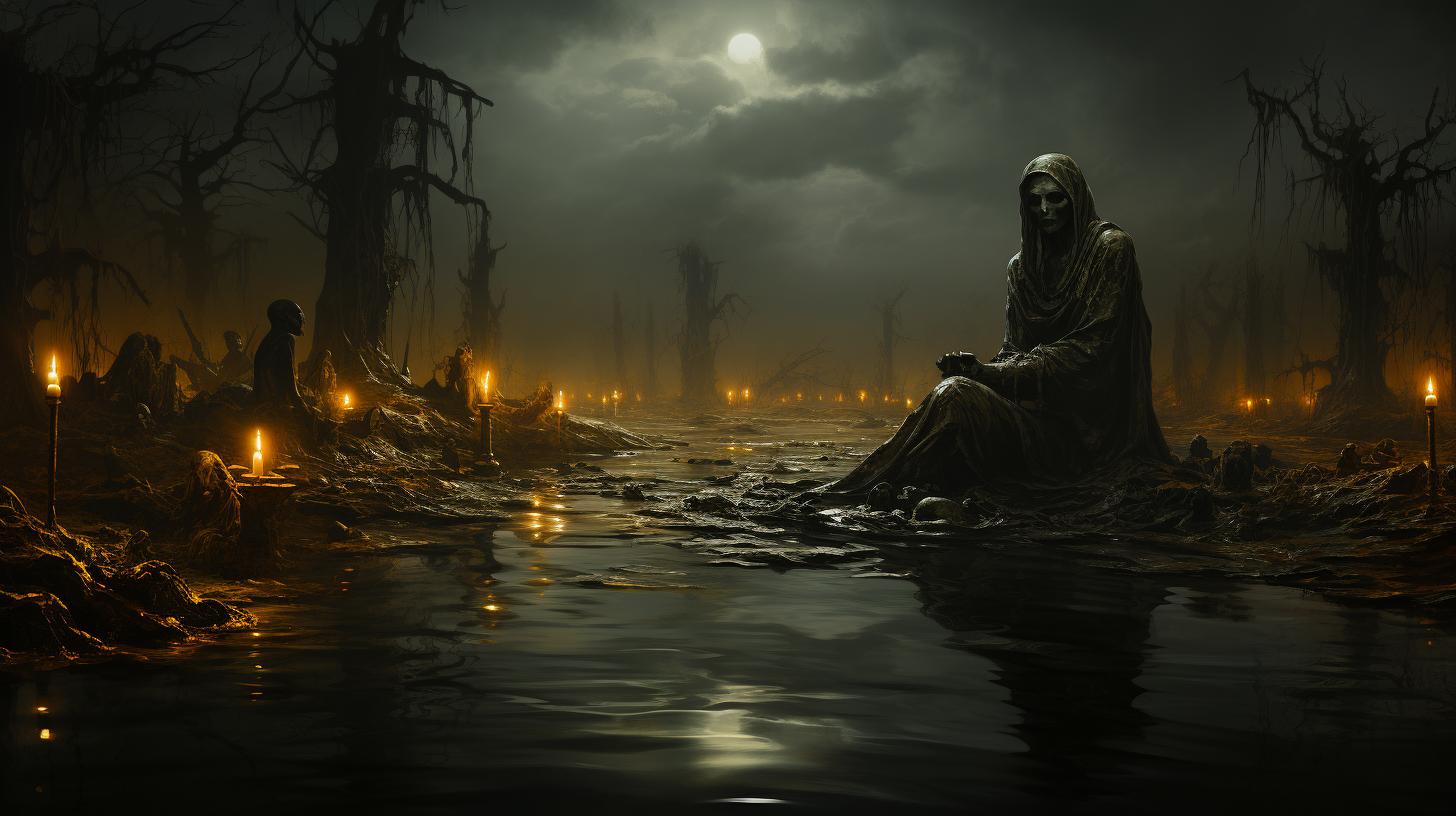
Topielec is a malevolent creature in Slavic mythology, known as the spirit of those who drowned in swamps. It is also encountered in the popular video game, The Witcher.
With a hybrid appearance of a human and reptile, complete with swollen, cloudy eyes, tangled hair, and slimy green skin, the Topielec is a relentless demon. In the game, it poses a formidable challenge, attacking with its claws and attempting to drown its victims.
Explore the origins, characteristics, and connections of the Topielec in this article on Slavic mythology and The Witcher game.
Topielec: A Terrifying Entity from Slavic Mythology
In Slavic mythology, the Topielec is a fearsome creature that has captured the imagination of many. Originating from legends and folklore, it embodies a malevolent spirit tied to the swamps and waters where individuals have met their untimely demise.
With its unique blend of human and reptilian features, the Topielec strikes fear into the hearts of those who encounter it.
Origins and Legends of the Topielec
The exact origins of the Topielec are shrouded in mystery, passed down through generations in the form of oral traditions. Slavic folklore tells tales of unfortunate souls who drowned in marshes and bodies of water, only to transform into vengeful spirits known as the Topielec.
These legends warn of the dangers of venturing into treacherous waters, where the ghostly Topielec lurks beneath the surface.
Description and Characteristics of the Topielec
The Topielec is described as a haunting hybrid creature, combining the features of a human and a reptile. Its eyes, swollen and clouded, emanate an eerie aura. With tangled, matted hair and slimy green skin, the Topielec is a sight that instills dread in all who witness it.
Its ferocity knows no bounds, using its sharp claws to attack relentlessly and attempting to drag its victims into the water, seeking to drown them in its watery domain.
Topielec in Polish Folklore and Mythology
The Topielec holds a significant place in the rich tapestry of Polish folklore and mythology. The creature’s presence is intertwined with the natural landscape of Poland, where marshes and wetlands are abundant.
Folklore warns of the dangers lurking in these murky waters, cautioning against straying too close to the domain of the Topielec. These tales serve as a reminder of the importance of respecting the forces of nature and the potential consequences that await those who dare to defy them.
Slavic Vampires: Bloodthirsty Creatures of the Night
Slavic Vampires hold a prominent place in the realm of myth and folklore, captivating the imagination with their dark allure and insatiable thirst for blood. In this section, we delve into the distinct features of these supernatural beings, explore the legends and folktales that surround them, and draw intriguing comparisons between Slavic vampires and other vampire myths.
Distinct Features of Slavic Vampires
- Unearthly Strength and Agility: Slavic vampires possess supernatural physical abilities, allowing them to overpower their victims with ease.
- Enhanced Senses: These creatures have heightened senses of sight, smell, and hearing, enabling them to detect even the slightest presence of blood.
- Immortality and Regeneration: Slavic vampires are immortal, able to heal rapidly from any wound, ensuring their everlasting existence.
- Vulnerability to Sunlight and Holy Objects: Like their counterparts in other vampire legends, Slavic vampires recoil from sunlight and are repelled by holy symbols, such as crucifixes and holy water.
Legends and Folktales Surrounding Slavic Vampires
Over centuries, Slavic folklore has been enriched with mesmerizing stories and tales about the existence and deeds of vampires.
These legends typically revolve around encounters with these dark creatures, their transformation into vampires, and the dire consequences of their insatiable thirst for blood.
One such legend tells the story of a peasant who unwittingly became a vampire after his death due to his sinful behavior during his lifetime.
Upon rising from the grave, he stalked his village, preying on the innocent and spreading terror among the community. The folklore reveals the perseverance of the villagers in their quest to defeat the creature and rid their lives of its haunting presence.
Comparison of Slavic Vampires with Other Vampire Myths
While vampires exist in various mythologies worldwide, Slavic vampires bear unique characteristics that set them apart from their counterparts in other vampire legends. Unlike the Western depiction of vampires as elegant and sophisticated creatures, Slavic vampires are often portrayed as grotesque and monstrous, reflecting the fears and anxieties deeply rooted in Slavic culture.
Their vulnerability to holy objects and aversion to sunlight aligns with the general vampire folklore, yet their specific attributes and cultural significance contribute to their distinct identity.
When comparing Slavic vampires with vampires of other regions, it becomes evident that although they share some common traits, such as immortality and bloodlust, each mythology adds its own touch, shaping the vampire into a creature that encompasses the fears, beliefs, and traditions of its cultural origin.
Sirin and Alkonost: Enchanting Birds of Slavic Mythology
In Slavic mythology, Sirin and Alkonost are two mystical and captivating birds with rich folklore and symbolism. These enchanting creatures have captured the imagination of people for centuries, inspiring tales, art, and literature.
Mythological Origins of Sirin and Alkonost
Sirin and Alkonost have their roots in ancient Slavic mythology, where they are believed to be celestial beings and messengers of the gods. According to legend, Sirin was said to dwell in paradise and sing beautiful melodies that brought joy and bliss to those who heard her.
Alkonost, on the other hand, was believed to reside near the entrance to the underworld and possessed a voice so mesmerizing that it could lull people to sleep.
Symbolism and Powers Associated with Sirin and Alkonost
Both Sirin and Alkonost are symbolically associated with different aspects of nature and human emotions.
Sirin represents happiness, love, and the eternal paradise, while Alkonost embodies mystery, illusion, and the boundary between life and death.
These divine birds are often depicted as harbingers of important events or messengers, foretelling both good and bad omens.
Their songs are said to possess magical qualities, bringing inspiration, tranquility, or even chaos to those who hear them.
Sirin:
- Symbolizes happiness and love
- Resides in paradise
- Known for her enchanting songs that bring joy and bliss
Alkonost:
- Symbolizes mystery and illusion
- Resides near the entrance to the underworld
- Has a captivating voice that can lull people to sleep
Depictions of Sirin and Alkonost in Art and Literature
The allure of Sirin and Alkonost has inspired countless artists and writers throughout history.
They have been portrayed in paintings, sculptures, and illustrations, often depicted with vibrant feathers and mesmerizing eyes.
These birds also make appearances in various works of literature, such as poems, novels, and folktales.
Their presence adds a touch of enchantment and mysticism to the stories, captivating readers with their otherworldly beauty and powers.
Shishiga: An Elusive Creature from Slavic Folklore
The Shishiga is an enigmatic creature deeply rooted in Slavic folklore. Legends and tales surrounding this mysterious being have fascinated generations, weaving a web of intrigue and uncertainty. Let us embark on a journey as we uncover the captivating world of the Shishiga.
Introduction to the Enigmatic Shishiga
The Shishiga emerges from the depths of Slavic folklore, captivating the imagination with its elusive nature. Often described as a shape-shifting creature, the Shishiga takes on various forms, making it difficult to discern its true identity.
This enigmatic being has captured the curiosity of storytellers and scholars alike.
Legends and Tales Involving the Shishiga
- The Tale of the Lost Wanderer: In this ancient legend, a weary traveler crosses paths with the Shishiga while journeying through the haunted forests. Caught in the creature’s spell, the wanderer is led astray, lost forever in a realm between reality and the supernatural.
- The Curse of the Shishiga’s Touch: A haunting tale tells of a young maiden who becomes cursed by a single touch of the Shishiga.
Transformed into a spectral being, she wanders the night, forever searching for a way to break the curse and find redemption.
- The Shishiga’s Bargain: In this cautionary tale, a desperate villager seeks the Shishiga’s aid to save their ailing loved one.
However, every deal with the Shishiga comes at a great cost, and the consequences of their decision unfold in tragic and unforeseen ways.
Interpretations and Cultural Significance of the Shishiga
The Shishiga holds a significant place in Slavic culture, symbolizing the unpredictability and ephemeral nature of life itself.
It serves as a reminder of the precarious balance between the seen and unseen worlds, urging caution and respect for the supernatural forces that intertwine with human existence. The Shishiga’s tales continue to intrigue, offering glimpses into the mysteries that lie beneath the surface of our reality.
The Witcher Connection: Topielec and Other Creatures in the Game
In the popular video game The Witcher, the presence of the terrifying creature known as the Topielec casts a dark shadow over its immersive world. This section explores the significant role and formidable abilities of the Topielec in the game, as well as its intriguing connections to other mythological creatures.
Topielec’s Role and Abilities in The Witcher Game
The Topielec is a formidable foe in The Witcher. As players embark on their adventures, they will encounter this malevolent creature lurking in the swamps, ready to unleash its wrath upon them.
Its primary objective is to drown the player character, aggressively attacking with its deadly claws and attempting to drag them into the treacherous waters.
Surviving an encounter with the Topielec requires wit, skill, and an arsenal of powerful weapons and magic.
Players must remain vigilant and adapt their combat strategies to counter its relentless attacks. Engaging the Topielec in combat is a test of one’s abilities and a thrilling challenge within the game’s immersive world.
Exploring Other Mythological Creatures in The Witcher
While the Topielec is undoubtedly a formidable adversary, it is not the only mystical creature that players will encounter in The Witcher. The game is rich with a diverse array of mythological beings that draw inspiration from Slavic folklore and beyond.
From the haunting Haunted Cow to the enigmatic Moth Girl, the realm of The Witcher is populated with a myriad of fantastical entities. Each creature possesses its own unique characteristics, abilities, and place within the game’s lore.
Exploring and confronting these creatures adds depth and excitement to the gameplay experience, keeping players captivated as they uncover the secrets of this imaginative world.
The Witcher’s Adaptation of Slavic Mythology
The Witcher franchise masterfully weaves elements of Slavic mythology into its narrative, creating a captivating fusion of fantasy and folklore.
The inclusion of creatures like the Topielec is a testament to the game’s commitment to express the rich cultural heritage of Slavic legends in a captivating and interactive way.
Through its stunning visuals, immersive storytelling, and meticulous attention to detail, The Witcher provides players with an opportunity to engage with Slavic mythology like never before.
It breathes new life into these timeless tales and introduces a wider audience to the intriguing and often macabre creatures that have captivated the imaginations of generations.
As players traverse the game’s intricately crafted world, the connection between the Topielec and other mythological entities deepens the lore and enriches the overall gaming experience.
The careful integration of Slavic mythology sets The Witcher apart and contributes to its status as a beloved and acclaimed franchise.
Unveiling the Depths: Topielec in Slavic and European Mythology
Unveiling the Depths explores the fascinating presence of the Topielec in both Slavic and European mythology.
This water spirit shares similarities with other mythical entities associated with bodies of water, revealing a shared cultural significance and belief system.
Similar Water Spirits and Mythological Terms
Within the realm of water spirits, the Topielec finds its place alongside other mystical beings. Nymphs, undines, and selkies all share a connection to water, existing as ethereal entities in various folklore traditions.
These spirits often possess the ability to influence the elements and communicate with humans.
Additionally, terms such as ‘vodyanoi’ in Russian mythology or ‘nixe’ in German folklore exhibit resemblances to the Topielec, characterizing malevolent water spirits who bring harm to those who cross their paths.
Comparative Analysis of Topielec and Related Spirits
A comparative analysis of the Topielec and related water spirits sheds light on their distinct characteristics and cultural contexts. While the Topielec embodies the restless spirit of drowned individuals, other water spirits symbolize different aspects of water’s power, such as fertility, cleansing, or transformation.
By examining the traits and legends associated with these spirits, we gain a deeper understanding of the diverse mythological representations of water.
For example, the Topielec’s hostile nature, with its intent to drown unsuspecting victims, stands in contrast to the benevolent attributes of mermaids in European folklore, who often rescue sailors or bestow favors upon humans.
Interactions and Significance of Water Spirits in Folklore
Water spirits like the Topielec hold immense cultural significance within Slavic and European folklore. They serve as cautionary figures, embodying the dangers and mysteries of bodies of water. Encounters with these spirits frequently involve testing the virtues and character of individuals who venture into their domain.
Furthermore, water spirits often symbolize the cyclical nature of life and death. They act as intermediaries between realms, representing the continuous flow of existence and the transformative power of water.
.

